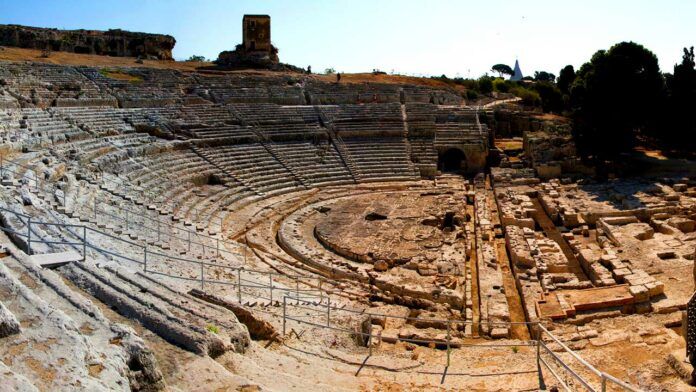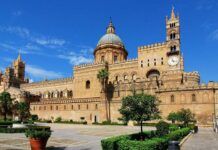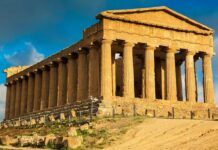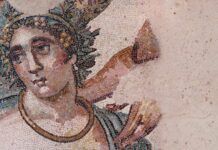Known for its ruins of the Greek era, Syracuse teems with beauty, including breathtaking views, monuments that bear the traces of distant peoples, as well as beaches and marine reserves to daydream.
Located southeast of Sicily, the city of Syracuse has its roots in the distant past and retains a strong link with ancient Greece. In classical times, in fact, when Sicily was affected by the Greek domination, Syracuse was considered the only city that for prestige and power could rival Athens.
Today, among the whiteness of its houses and its stone monuments, Syracuse jealously guards its Hellenic ruins in the Neapolis Archaeological Park – considered a UNESCO World Heritage Site – which, completely immersed in the vegetation of the Mediterranean maquis, encloses an ancient Amphitheater of the fifth century BC carved into the rock, the Temple of Hieron, the Tomb of Archimedes and the Ear of Dionysius, an artificial cave in the heart of an ancient stone quarry next to the remains of a Greek Theater.
A short distance from the Neapolis Archaeological Park are the ruins of the church of San Giovanni alle Catacombe, a basilica in Norman Gothic style whose underground passages, used as aqueducts in Greek times, were later used by the Romans as catacombs. Make sure you visit it at sunset when its facade is tinged with pinkish hues. The interior of the basilica houses instead, the Byzantine Crypt of St. Marcian, in which the remains of the first bishop of Syracuse were buried, considered, among other things, the founder of the first Christian community in the Western world.
The physical conformation of the center of Syracuse is particularly interesting. It, in fact, coincides with the Island of Ortigia, which is the oldest part of the city and is connected to the mainland by two bridges. In the heart of Ortigia, among a maze of narrow streets and old-world atmospheres, are concentrated all the valuable architectures in baroque, liberty and rococo style of the city. If the Greek amphitheater is considered the most important historical monument of Syracuse, the Cathedral of Ortigia deserves recognition as the highest expression of Syracuse Baroque. Once the site of a Greek temple dedicated to the goddess Minerva, the Metropolitan Cathedral of the Nativity of the Blessed Virgin Mary of Syracuse surprises with its marvelous eighteenth-century facade in white stone, one of the most beautiful in Sicily, in which Baroque elements combine with Rococo volumes.
Always in Ortigia, a visit to the Maniace Castle is a must. Built in the thirteenth century at the behest of Emperor Frederick II of Swabia for defensive purposes, this city fortress with a square base, with four cylindrical towers on either side, can be reached by walking along a pedestrian promenade overlooking crystal clear waters. Just from the Castle, from the loopholes built for the cannons, you can enjoy one of the most striking views of the city.
But in Syracuse also lovers of art and culture can feast their eyes. The central Palazzo Bellomo, in fact, contains masterpieces ranging from Syracuse and Sicilian works of art from the Byzantine, Arab, Norman, up to the Annunciation by Antonello da Messina.
Finally, the sandy beach of Arenella, as well as the beach of Calamosche and the Wildlife Reserve Oasis of Vendicari, a paradise for birdwatching and an ideal destination for a relaxing break, are easily accessible by continuing south along the coast.











